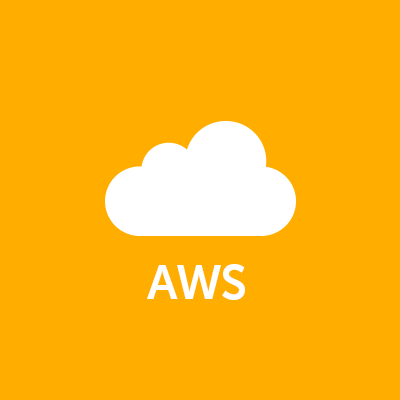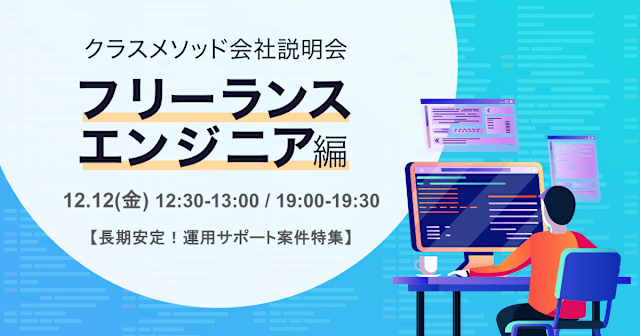
AWSのFPGAインスタンス用サンプルカスタムロジックcl_hello_worldのAFIを構築してみました #fpga
この記事は公開されてから1年以上経過しています。情報が古い可能性がありますので、ご注意ください。
AWSのFPGAを搭載したEC2インスタンスであるF1インスタンス用カスタムロジック(CL)のサンプルをビルドして、AFI(Amazon FPGA Image)の構築手順を試してみましたのでご報告します。
はじめに
先日書きましたFPGAの開発ツールでサンプルをビルドする手順ですは、ごく単純なHDL(Hardware Description Language)のサンプルで、特にAWS F1インスタンス用というわけではありませんでした。F1インスタンスで何か有意な処理をさせようとするには、FPGAとCPUやメモリの間でデータのやりとりを行う必要があり、それなりの中身が必要なはずです。探してみるとちゃんとサンプルがありましたので、今回はこれをビルド(合成)してみました。手順が長くなりましたので、今回はビルドとイメージの作成までを説明します。完成したイメージをロードして動かしてみるのは次の記事にしたいと思います。
今回の手順の概略は以下のとおりです。
- EC2インスタンスを起動する
- SDKをダウンロードする
- ビルドする
- AFI(Amazon FPGA Image)を作成する
EC2インスタンスを起動する
FPGA Developer AMIを使うため、インスタンスをLaunchします。前回同様、AMI MarketplaceからFPGAを選びます。インスタンスタイプは、今回はオススメに従ってc4.4xlargeを使うことにします。デフォルトでc4.4xlargeにチェックが入っていますので、素直にこれに従います。あとはデフォルトのままでOKです。


SDKをダウンロードする
EC2インスタンスが起動してから、SSHでログインします。AWS F1インスタンス用のSDKは、githubで提供されていますのでgithubからcloneします。
$ ssh -i your-private-key.pem centos@ec2-XX-XXX-XX-XXX.compute-1.amazonaws.com Last login: Thu Apr 20 16:43:01 2017 from 72-21-196-69.amazon.com ___ ___ ___ _ ___ _____ __ _ __ __ ___ | __| _ \/ __| /_\ | \| __\ \ / / /_\ | \/ |_ _| | _|| _/ (_ |/ _ \ | |) | _| \ V / / _ \| |\/| || | |_| |_| \___/_/ \_\ |___/|___| \_/ /_/ \_\_| |_|___| AMI Version: 1.2.1 Readme: /home/centos/src/README.md GUI Setup Steps: /home/centos/src/GUI_README.md AMI Release Notes: /home/centos/src/RELEASE_NOTES.md Xilinx Tools: /opt/Xilinx/ Developer Support: https://github.com/aws/aws-fpga/blob/master/README.md#developer-support [centos@ip-172-31-21-121 ~]$
ディレクトリをsrc/project_dataに移動して、https://github.com/aws/aws-fpga.git からgit cloneします。
$ cd src/project_data/ $ git clone https://github.com/aws/aws-fpga.git Cloning into 'aws-fpga'... remote: Counting objects: 3007, done. remote: Compressing objects: 100% (184/184), done. remote: Total 3007 (delta 120), reused 73 (delta 73), pack-reused 2750 Receiving objects: 100% (3007/3007), 136.25 MiB | 5.31 MiB/s, done. Resolving deltas: 100% (1474/1474), done. Checking out files: 100% (1379/1379), done.
中身を確認してみます。HDKがハードウェアの開発キット、SDKはソフトウェアの開発キットです。今回使うサンプルはHDKに入っています。
$ cd aws-fpga/ $ ls -l total 96 -rw-rw-r-- 1 centos centos 28471 May 2 03:58 FAQs.md drwxrwxr-x 5 centos centos 4096 May 2 03:58 hdk -rw-rw-r-- 1 centos centos 8892 May 2 03:58 hdk_setup.sh -rw-rw-r-- 1 centos centos 11364 May 2 03:58 LICENSE.txt -rw-rw-r-- 1 centos centos 6921 May 2 03:58 README.md -rw-rw-r-- 1 centos centos 20651 May 2 03:58 RELEASE_NOTES.md drwxrwxr-x 6 centos centos 4096 May 2 03:58 sdk -rwxrwxr-x 1 centos centos 978 May 2 03:58 sdk_setup.sh
ビルドする
aws-fpgaディレクトリに、環境をセットアップするためのスクリプトが用意されているので、これを読み込みます。予想外に時間がかかります。環境変数だけかと思ったら、ライブラリのビルドを行なっているようです。
$ source hdk_setup.sh
INFO: Using Vivado v2017.1 (64-bit)
INFO: Setting up environment variables
INFO: Using HDK shell version shell_v04151701
INFO: HDK shell's checkpoint hasn't been downloaded yet.
INFO: Downloading latest HDK shell checkpoint from aws-fpga-hdk-resources/hdk/shell_v04151701/build/checkpoints/from_aws/SH_CL_BB_routed.dcp
INFO: HDK shell is up-to-date
INFO: DDR4 model files in /home/centos/src/project_data/aws-fpga/hdk/common/verif/models/ddr4_model/ do NOT exist. Running model creation step.
INFO: Building in /home/centos/src/project_data/aws-fpga/ddr4_model_build
INFO: This could take 5-10 minutes, please be patient!
****** Vivado v2017.1 (64-bit)
**** SW Build 1846317 on Fri Apr 14 18:54:47 MDT 2017
**** IP Build 1846188 on Fri Apr 14 20:52:08 MDT 2017
** Copyright 1986-2017 Xilinx, Inc. All Rights Reserved.
Sourcing tcl script '/opt/Xilinx/Vivado/2017.1/scripts/Vivado_init.tcl'
source /home/centos/src/project_data/aws-fpga/hdk/common/shell_stable/design/ip/ddr4_core/ddr4_core_ex.tcl -notrace
...省略...
INFO: DDR4 model build passed.
INFO: ATTENTION: Don't forget to set the CL_DIR variable for the directory of your Custom Logic.
INFO: AWS HDK setup PASSED.
つづいて、サンプルプロジェクトですが、hdk/cl/examplesには二つ用意されています。
- cl_hello_world
- cl_dram_dma
$ cd hdk/cl/examples/ $ ls -l total 32 drwxrwxr-x 6 centos centos 4096 May 2 03:58 cl_dram_dma -rw-rw-r-- 1 centos centos 1406 May 2 03:58 cl_examples_list.md drwxrwxr-x 6 centos centos 4096 May 2 03:58 cl_hello_world drwxrwxr-x 3 centos centos 4096 May 2 03:58 common -rw-rw-r-- 1 centos centos 12512 May 2 03:58 README.md
今回は名前からして易しそうな、cl_hello_worldを試してみます。README.mdに従って手順を進めます。
まずはEC2インスタンスからaws-cliを使うため、クレデンシャルを設定しておきます。AWSコンソールのIAMから必要なキーとクレデンシャルを参照して設定します。
$ aws configure
もうひとつ準備として、環境変数CL_DIRにプロジェクトディレクトリをセットする必要があるようです。それができたら、build/scriptディレクトリにあるビルドスクリプトを実行します。
$ cd cl_hello_world/ $ export CL_DIR=$(pwd) $ cd build/scripts/ $ ./aws_build_dcp_from_cl.sh AWS FPGA: Starting the design checkpoint build process AWS FPGA: Checking for proper environment variables and build directories Creating the reports directory Creating the checkpointss directory Creating the checkpoints\/to_aws directory AWS FPGA: Environment variables and directories are present. Checking for Vivado installation. AWS FPGA: Build through Vivado is running as background process, this may take few hours.
スクリプトを実行すると「数時間かかるよ」とのメッセージが表示され、すぐにプロンプトに戻ってきます。これで処理が終わったわけではなく、バックグラウンドでビルド作業が進行しています。このまま終わるまでしばらく待ちます。実際に試したところ、3時間程度かかりました。インスタンスを上げておけば、ログアウトしても大丈夫です。
README.mdによると、作業の終了をメールで通知する仕組みが用意されているようです。この通知を受けるには、まずSNS (Simple Notification Service)の設定をする必要があります。
$ export EMAIL=your.email@example.com $ ./$HDK_COMMON_DIR/scripts/notify_via_sns.py
メールが来るので、その中のURLをクリックして、Subscribeを有効化しておきます。そのうえで、aws_build_dcp_from_cl.shスクリプトに-notifyオプションを付けてると、ビルド完了のときにメールで通知されるとのことです。
ビルドが正常に終わると、build/checkpoint/to_awsというディレクトリにtarファイルが作成されます。
$ ls -l build/checkpoints/to_aws/ total 276140 -rw-rw-r-- 1 centos centos 141381632 Apr 26 18:27 17_04_26-145828.Developer_CL.tar -rw-rw-r-- 1 centos centos 375 Apr 26 18:27 17_04_26-145828.manifest.txt -rw-rw-r-- 1 centos centos 141378721 Apr 26 18:27 17_04_26-145828.SH_CL_routed.dcp
AFIの作成
tarファイルができても完成ではありません。今度はこれをS3にアップロードして、AFI(Amazon FPGA Image)の作成を依頼します。実作業はインスタンスの中ではなく、コマンドを実行して作成を依頼、そうするとAWS側で処理を行うという流れになります。
まずはaws-cliを使って、S3のバケットを作成します。ここでは"cl_hello_world_01"というバケット名にしました。
$ aws s3 mb s3://cl_hello_world_01 --region us-east-1 make_bucket: cl_hello_world_01 $ aws s3 mb s3://cl_hello_world_01/dcp make_bucket: cl_hello_world_01 $ aws s3 mb s3://cl_hello_world_01/log make_bucket: cl_hello_world_01
そしてこのバケットの中に、先ほどのtarファイルをコピーしておきます。
$ aws s3 cp build/checkpoints/to_aws/*.Developer_CL.tar s3://cl_hello_world_01/dcp
イメージを作成してもらうために、このS3バケットに、ポリシーを設定します。この作業にはAWSコンソールを使います。AWSコンソールから、S3を開き、目的のバケットを選び、Properties、そしてPermissionをクリックします。

そしてEdit Bucket Policyをクリックして、下記のJSONを貼り付け、Saveを押します。バケット名やファイル名は適切に合わせます。
{
"Version": "2012-10-17",
"Statement": [
{
"Sid": "Bucket level permissions",
"Effect": "Allow",
"Principal": {
"AWS": "arn:aws:iam::365015490807:root"
},
"Action": "s3:ListBucket",
"Resource": "arn:aws:s3:::cl_hello_world_01"
},
{
"Sid": "Object read permissions",
"Effect": "Allow",
"Principal": {
"AWS": "arn:aws:iam::365015490807:root"
},
"Action": "s3:GetObject",
"Resource": "arn:aws:s3:::cl_hello_world_01/dcp/17_04_26-145828.Developer_CL.tar"
},
{
"Sid": "Folder write permissions",
"Effect": "Allow",
"Principal": {
"AWS": "arn:aws:iam::365015490807:root"
},
"Action": "s3:PutObject",
"Resource": "arn:aws:s3:::cl_hello_world_01/log/*"
}
]
}

チェック用のスクリプトがありますので、これにバケット名やキー名を与えてチェックします。
$ cd ../../../common/scripts/ $ ./check_s3_bucket_policy.py --dcp-bucket cl_hello_world_01 --dcp-key dcp/17_04_26-145828.Developer_CL.tar --logs-bucket cl_hello_world_01 --logs-key log INFO: Passed
Passedと表示されました。準備OKですので、awsコマンドのcreate-fpga-imageというサブコマンドを使ってイメージ作成を開始します。作成するイメージ名、S3バケット名やキー名を適切に与えます。すぐに、作成されるAFIのIDが返されてきます。コマンドは終了しますが、AFIはまだできていません。
$ aws ec2 create-fpga-image --name cl_hello_world_test1 --description cl_hello_world_test1 --input-storage-location Bucket=cl_hello_world_01,Key=dcp/17_04_26-145828.Developer_CL.tar --logs-storage-location Bucket=cl_hello_world_01,Key=log
{
"FpgaImageId": "afi-087de794473334559",
"FpgaImageGlobalId": "agfi-0c023fead7942c8e0"
}
処理が完了するまでしばらく待ちます。この過程ではインスタンスは使わないようです(インスタンスを落としても大丈夫だと思います)。このフェーズも結構な時間がかかりました。1.5H程度待つと、S3に以下のようなログファイルが生成されていました。
$ aws s3 ls s3://cl_hello_world_01/log/ --recursive 2017-04-26 20:50:05 0 log/LOGS_FILES_GO_HERE.txt 2017-04-26 22:17:33 87787 log/afi-087de794473334559/17_04_26-221726_debug_probes.ltx 2017-04-26 22:17:33 667249 log/afi-087de794473334559/17_04_26-221726_io_summary.rpt 2017-04-26 22:17:33 1766478 log/afi-087de794473334559/17_04_26-221726_timing_summary.rpt 2017-04-26 22:17:33 20182 log/afi-087de794473334559/17_04_26-221726_vivado.log 2017-04-26 22:25:39 17 log/afi-087de794473334559/State
確認はAWSコンソールでも行うことができます。

Stateというファイルの中に結果が格納されているとのことなので、確認してみます。
$ aws s3 cp s3://cl_hello_world_01/log/afi-087de794473334559/State -
{State=available}
availableとのことなので、無事にAFIが準備できたようです。AFIは実際のファイルとしては見えていませんが、AWS側で管理されているようです。FPGAへのロードも、AFIのIDを指定して行います。
まとめ
aws-fpgaのHDKのサンプルCL_HELLO_WORLDから、FPGA Developer AMIを使って、AFIを作成することができました。
次の記事では、実際にAWS F1インスタンスを上げて、作成したAFIをロードしてみたいと思います。うまく行けば、何か操作ができるはずです。









